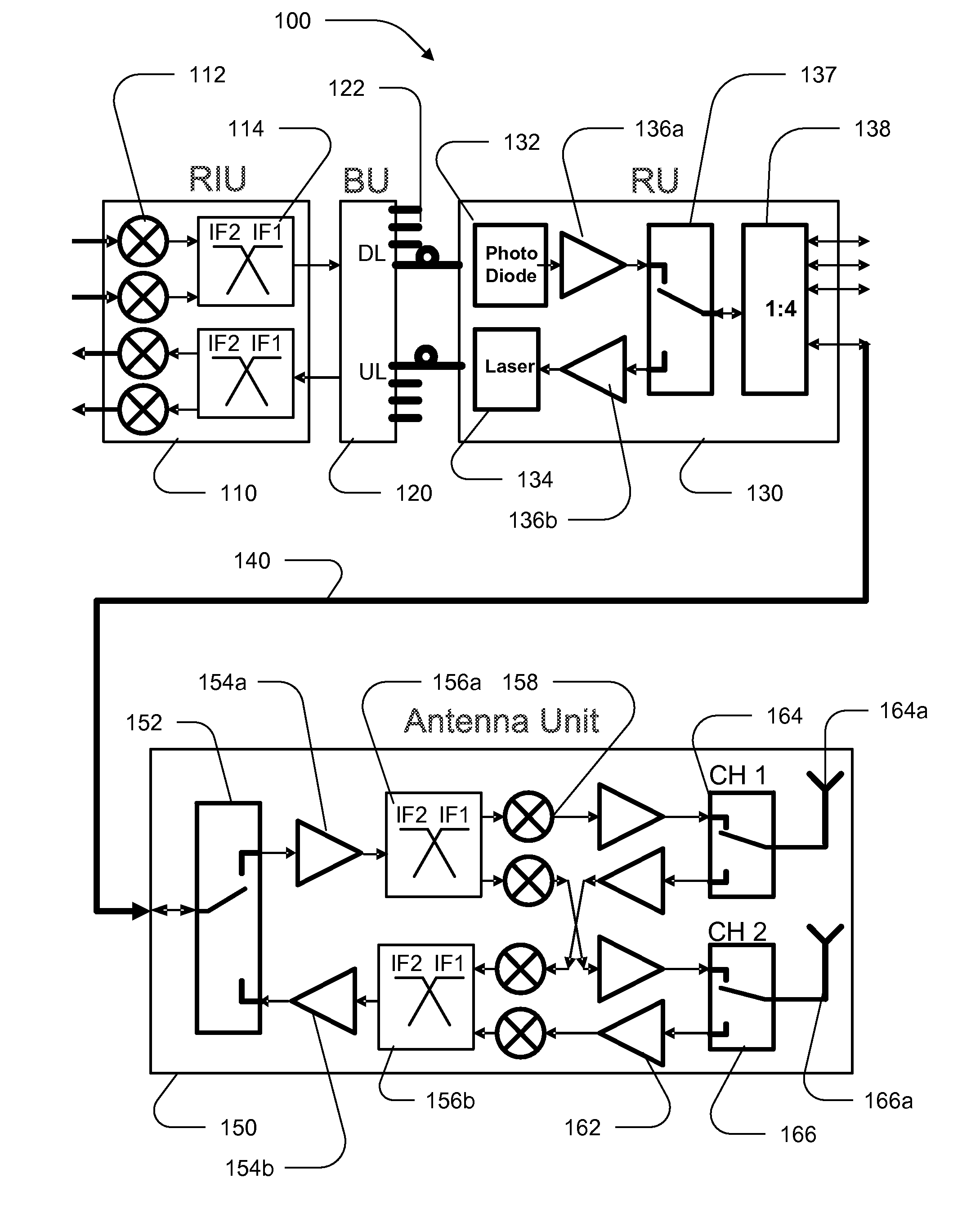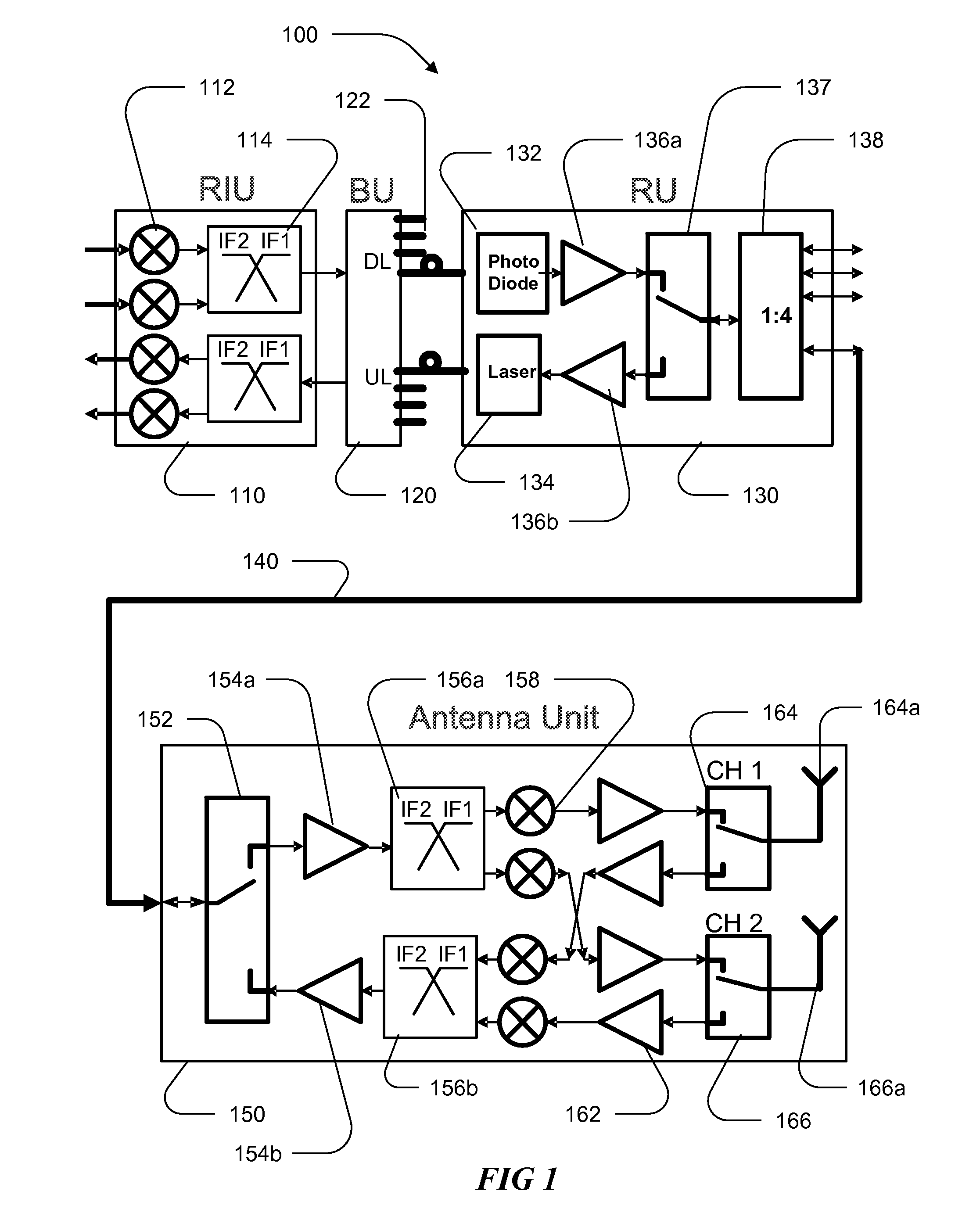Distributed antenna system for MIMO technologies
a technology of distributed antennas and mimo technologies, applied in the field of distributed antenna systems, to achieve the effect of less spectrum resources and easy suppor
- Summary
- Abstract
- Description
- Claims
- Application Information
AI Technical Summary
Benefits of technology
Problems solved by technology
Method used
Image
Examples
Embodiment Construction
[0016]In accordance with the invention, a method and system can be implemented in a DAS architecture which uses both fiber links and coax links, for a MIMO service using 2 or more spatial streams and operating in TDD mode. Other configurations, such as those supporting 3 or more special streams, would require simple variations on the scheme presented below.
[0017]FIG. 1 shows an example of a DAS 100 in accordance with the invention. The DAS can include a Radio Interface Unit (RIU) 110, a Base Unit (BU) 120, a Remote Unit (RU) 130 and an Antenna Unit (AU) 150.
[0018]The RIU 110 provides the interface to the Base station (BTS, not shown). In this embodiment, the RIU has two DL connections from the BTS and two UL connections to the BTS, however a single DL / UL connection or more than two DL and UL connections can be carried by the system. The RIU 110 can include a mixer 112 on each DL connection and a mixer 112 on each UL connection. The RIU 110 can implement the frequency shifting (“down...
PUM
 Login to View More
Login to View More Abstract
Description
Claims
Application Information
 Login to View More
Login to View More - R&D
- Intellectual Property
- Life Sciences
- Materials
- Tech Scout
- Unparalleled Data Quality
- Higher Quality Content
- 60% Fewer Hallucinations
Browse by: Latest US Patents, China's latest patents, Technical Efficacy Thesaurus, Application Domain, Technology Topic, Popular Technical Reports.
© 2025 PatSnap. All rights reserved.Legal|Privacy policy|Modern Slavery Act Transparency Statement|Sitemap|About US| Contact US: help@patsnap.com



